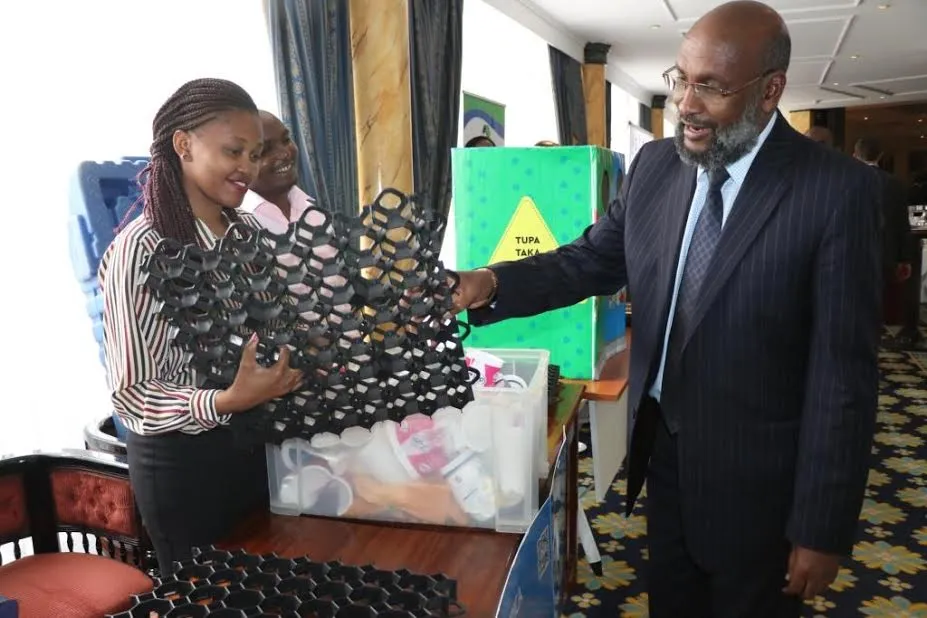Kenya’s critical Sh97 billion financial lifeline from the World Bank remains suspended in limbo as the international lender maintains its demand for sweeping reforms across governance, fiscal management, and economic transparency. The standoff, now extending into its third month since the initial July 2025 agreement, underscores mounting tensions between Kenya’s aggressive borrowing strategy and increasingly stringent international oversight of how developing nations manage their public finances.
In a comprehensive update issued from Washington on November 12, the World Bank reiterated its unwavering position, firmly tying disbursement of the substantial loan package to Kenya’s compliance with 11 specific benchmarks designed to address critical governance gaps, strengthen fiscal transparency mechanisms, and establish foundations for sustainable long-term economic growth. Treasury Cabinet Secretary John Mbadi has confirmed that negotiations continue between Kenyan officials and World Bank representatives, though he acknowledged that no immediate breakthrough appears imminent.
Build the future you deserve. Get started with our top-tier Online courses: ACCA, HESI A2, ATI TEAS 7, HESI EXIT, NCLEX-RN, NCLEX-PN, and Financial Literacy. Let Serrari Ed guide your path to success. Enroll today.
Kenya’s Mounting Debt Crisis and Growth Challenges
The delayed loan disbursement comes at a particularly precarious moment for Kenya’s economy, which is grappling with a staggering Sh12.1 trillion national debt burden that has raised serious concerns among economists, credit rating agencies, and development partners about the country’s long-term fiscal sustainability. Despite government projections forecasting 5.6 percent economic growth for the coming year, the inability to access the World Bank funding could trigger significant ripple effects throughout the economy, potentially delaying critical infrastructure projects, straining essential social programmes, and undermining investor confidence in Kenya’s economic management.
The implications extend far beyond mere budget numbers. Infrastructure projects ranging from road construction to energy installations that depend on this external financing face uncertain timelines, while social safety net programmes serving Kenya’s most vulnerable populations could experience funding shortfalls. For a nation attempting to balance ambitious development aspirations against fiscal constraints, these delays represent more than bureaucratic inconvenience—they threaten to derail carefully calibrated economic strategies.
The Central Account Mandate: Consolidating Government Finance
At the forefront of the World Bank’s 11 conditions stands the central account stipulation, which mandates that all government revenues and expenditures must flow through a single consolidated hub managed by the Central Bank of Kenya. This requirement draws inspiration from successful financial management models implemented in neighboring Rwanda and Uganda, where centralized treasury systems have demonstrably reduced fiscal leakages and enhanced oversight capabilities.
The rationale behind this condition addresses longstanding concerns about Kenya’s fragmented banking arrangements, where government funds have historically been scattered across multiple commercial bank accounts. This dispersed system has facilitated off-budget spending scandals, created opportunities for unauthorized fund diversions, and complicated efforts to maintain comprehensive oversight of public expenditures. “Scattered funds breed shadows; centralisation brings sunlight,” a World Bank official noted in a leaked internal memo obtained by Business Daily, estimating that centralized account management could potentially save Kenya approximately Sh50 billion annually in administrative waste and leakage prevention.
Implementation of this central account system will require significant technical infrastructure development, procedural standardization across government agencies, and cultural shifts in how ministries and departments manage their financial operations. The transition period may present operational challenges, but the long-term benefits for fiscal transparency and accountability have been well-documented in countries that have successfully implemented similar systems.
E-Procurement Revolution: Digitizing Public Purchasing
Electronic procurement emerges as another cornerstone of the World Bank’s reform agenda, requiring that all public procurement processes route through a comprehensive digital platform capable of logging bid submissions, tracking vendor performance histories, flagging pricing anomalies in real-time, and creating auditable trails for every purchasing decision. This condition directly targets Kenya’s procurement sector, which has been notoriously plagued by corruption scandals, inflated contracts, and the persistent problem of “ghost suppliers” who receive payments for goods or services never delivered.
Kenya’s existing Integrated Financial Management Information System (IFMIS) would receive substantial upgrades under this requirement, transforming it from a basic financial tracking tool into a sophisticated procurement management platform with anti-corruption safeguards built into its architecture. Early pilot programmes implemented in progressive counties like Mombasa have demonstrated impressive results, showing cost reductions of approximately 20 percent through enhanced competition, reduced processing times, and elimination of corrupt intermediaries.
However, scaling this digital procurement system nationwide presents formidable challenges. The initiative will require substantial technology infrastructure investments, comprehensive training programmes for an estimated 10,000 procurement officers scattered across national and county government entities, change management processes to overcome resistance from stakeholders benefiting from current opaque systems, and robust cybersecurity measures to protect sensitive procurement data from hacking attempts.
Market Competition Reforms: Breaking Monopolistic Strangleholds
The World Bank’s conditions include stringent market dominance curbs designed to strengthen antitrust enforcement and rein in monopolistic practices across key economic sectors including telecommunications, banking, and retail. These reforms would significantly expand the powers of the Competition Authority of Kenya, enabling more aggressive investigation of unfair pricing practices, barriers to market entry, and anti-competitive behavior by dominant firms.
This requirement addresses Kenya’s heavily concentrated market structure, where research by the Kenya Institute for Public Policy Research and Analysis (KIPPRA) indicates that approximately 60 percent of economic sectors operate under oligopolistic conditions. Telecommunications giant Safaricom, banking behemoths like Equity Bank, and major retail chains have faced recurring accusations of leveraging market dominance to stifle competition, maintain artificially elevated prices, and create insurmountable barriers for smaller competitors attempting to enter these markets.
Enhanced competition enforcement aligns with Kenya’s Vision 2030 development blueprint, which explicitly identifies inclusive economic growth as a fundamental objective. Economists estimate that breaking up monopolistic market structures and fostering genuine competition could potentially unlock approximately Sh100 billion in new investments by small and medium enterprises currently shut out of oligopolistic sectors. These SME investments would generate employment opportunities, stimulate innovation, and distribute economic benefits more broadly across Kenyan society.
Conflict of Interest Safeguards: Ending Regulatory Capture
Conflict of interest reforms strike at the heart of Kenya’s governance challenges by demanding rigorous enforcement of the Public Officer Ethics Act, which prohibits government officials from maintaining financial interests in companies operating within sectors they regulate or oversee. These provisions aim to eliminate the endemic problem of regulatory capture, where officials use their positions to advance private business interests rather than serving the public good.
High-profile corruption cases, including the notorious 2020 Arror and Kimwarer dams scandal that allegedly siphoned billions of shillings through politically connected contractors, have highlighted the urgent need for stronger conflict of interest enforcement. The World Bank is demanding mandatory public disclosures of officials’ business interests, family connections to contractors or regulated entities, and financial holdings that could create conflicts with their public duties.
Leaked World Bank assessments estimate that cronyism and conflicts of interest drain approximately Sh200 billion annually from Kenya’s economy through inflated contracts, regulatory favoritism, and procurement decisions influenced by personal relationships rather than merit or value for money. Addressing these structural governance weaknesses represents a fundamental prerequisite for restoring confidence in Kenya’s public institutions among both citizens and international development partners.
Social Protection Enhancement: Safeguarding Vulnerable Populations
Social protection receives focused attention in the World Bank conditions through requirements to strengthen the Social Assistance Act and ensure efficient delivery of cash transfers to approximately 2 million vulnerable households through digitized beneficiary registries. This builds upon Kenya’s existing Inua Jamii programme, which provides vital support to elderly citizens, orphans, and persons with disabilities across the country.
The current social protection system serves roughly 1.5 million orphans and elderly Kenyans, but has struggled with significant challenges including fraudulent beneficiary registrations, ghost recipients draining programme resources, payment delays, and inadequate targeting mechanisms that sometimes exclude genuinely needy households while including ineligible recipients. With Kenya’s poverty rate hovering around 36 percent according to Kenya National Bureau of Statistics data, ensuring that social assistance reaches intended beneficiaries efficiently represents both a humanitarian imperative and an economic necessity.
Digital beneficiary registries incorporating biometric identification, mobile money payment systems, and real-time monitoring capabilities would substantially reduce fraud opportunities while accelerating payment processing and improving programme transparency. These technological enhancements, combined with regular eligibility verification processes, could transform Kenya’s social safety net into a more responsive and trustworthy system serving those who depend on it most desperately.
One decision can change your entire career. Take that step with our Online courses in ACCA, HESI A2, ATI TEAS 7, HESI EXIT, NCLEX-RN, NCLEX-PN, and Financial Literacy. Join Serrari Ed and start building your brighter future today.
Insolvency Framework Modernization: Supporting Business Recovery
The World Bank conditions include provisions to strengthen Kenya’s insolvency regime under the 2015 Insolvency Act, streamlining bankruptcy procedures to allow financially distressed companies to restructure debts and reorganize operations without necessarily facing complete liquidation. This reform carries particular importance for Kenya’s entrepreneurial ecosystem, where startups face failure rates approaching 40 percent within their first five years of operation.
Current insolvency procedures in Kenya are often lengthy, costly, and weighted heavily toward liquidation rather than rehabilitation. This creates perverse incentives where company directors may continue operating insolvent businesses inappropriately while creditors face prolonged uncertainty about recovering owed amounts. Modern insolvency frameworks emphasize business rescue possibilities, recognizing that preserving viable enterprises protects jobs, maintains productive capacity, and often generates better outcomes for creditors than forced asset liquidations.
Implementing efficient insolvency procedures requires training specialized judges and administrators, establishing clear timelines for restructuring negotiations, protecting employee rights during reorganization processes, and ensuring transparency so stakeholders understand their positions and prospects. These improvements would enhance Kenya’s business environment, potentially encouraging more entrepreneurial risk-taking by reducing the catastrophic consequences of business failure.
Financial Safeguards for Digital Systems: Protecting Against Cyber Threats
As Kenya digitizes approximately Sh1 trillion in annual government spending through electronic systems, the World Bank conditions demand robust financial safeguards incorporating regular audits, artificial intelligence-powered monitoring systems, and sophisticated cybersecurity measures to prevent hacking attempts, data breaches, and digital fraud. The proliferation of digital financial management systems creates significant efficiency gains but simultaneously opens new vulnerability vectors that sophisticated criminals and even hostile state actors could potentially exploit.
Recent years have witnessed escalating cyber threats targeting financial systems across Africa, with attackers employing increasingly sophisticated techniques to penetrate digital defenses, manipulate transaction records, or steal sensitive financial data. Kenya’s digitization push must therefore be accompanied by corresponding investments in cybersecurity infrastructure, regular penetration testing, incident response capabilities, and continuous staff training on emerging threats and protective measures.
The World Bank’s emphasis on AI-powered monitoring reflects recognition that traditional audit approaches cannot adequately oversee the massive transaction volumes flowing through digitized systems. Machine learning algorithms can analyze spending patterns, flag anomalous transactions for human review, detect potential fraud signatures, and provide real-time risk assessments that enable rapid intervention before minor issues escalate into major scandals.
Public-Private Partnership Reforms: Learning from Past Failures
Public-private partnership regulations receive significant attention in the World Bank conditions, with demands for crystal-clear contractual frameworks addressing allocation of risks, performance benchmarks, dispute resolution mechanisms, and transparency requirements. These reforms respond directly to high-profile PPP failures including the stalled Galana Kulalu irrigation project, which consumed substantial public resources while delivering minimal results due to poorly structured agreements, inadequate oversight, and unclear accountability mechanisms.
Well-structured PPPs can mobilize private capital for infrastructure development, transfer technical expertise to government entities, improve service delivery efficiency, and allocate risks to parties best positioned to manage them. However, poorly designed PPP arrangements often result in excessive public risk exposure, inflated costs, service delivery failures, and protracted legal disputes that benefit lawyers while leaving citizens with substandard infrastructure.
The World Bank’s emphasis on PPP reform reflects global lessons about the importance of sophisticated public sector capacity to negotiate, structure, and manage these complex arrangements. Kenya will need to invest in developing specialized PPP units staffed by professionals with legal, financial, and technical expertise sufficient to negotiate on equal terms with experienced private sector partners.
Urban Transport Solutions: Addressing Nairobi’s Mobility Crisis
Urban transport policies targeting Nairobi’s severe congestion problems feature prominently in the reform conditions, with World Bank support for rail expansions including the proposed Sh300 billion Standard Gauge Railway extension aimed at reducing commute times by approximately 30 percent while simultaneously cutting vehicle emissions. Nairobi’s traffic gridlock imposes enormous economic costs through lost productivity, increased transport expenses, reduced quality of life, and environmental damage from vehicles idling in congested conditions.
Comprehensive urban transport solutions require coordinated approaches addressing rail transit, bus rapid transit systems, non-motorized transport infrastructure for pedestrians and cyclists, traffic management technologies, and land use planning that reduces the need for long-distance commuting. The World Bank’s conditions push Kenya toward integrated urban mobility planning rather than piecemeal interventions that fail to address systemic problems.
SACCO Governance Strengthening: Protecting Member Savings
Savings and Credit Cooperative Organizations (SACCOs) governance receives focused attention through conditions requiring enhanced oversight under the SACCO Societies Act, including mandatory board rotations, regular independent audits, and strengthened regulatory supervision. SACCOs collectively manage approximately Sh500 billion in member savings, making them systemically important financial institutions whose failure could devastate thousands of Kenyan families.
Recent SACCO mismanagement scandals, where board members or executives diverted member funds for personal enrichment, have highlighted critical weaknesses in current governance frameworks. Strengthened regulations would impose professional management standards, limit related-party transactions, require adequate capital reserves, and enable earlier regulatory intervention when SACCOs show signs of financial distress.
ESG Linkages: Aligning Finance with Environmental Goals
Finally, the World Bank conditions tie loan disbursements to environmental, social, and governance (ESG) benchmarks, including specific targets for reforestation efforts, renewable energy adoption, and progress toward Kenya’s net-zero emissions pledge for 2050. This reflects the evolving international consensus that development finance should actively support climate mitigation and adaptation rather than perpetuating unsustainable economic models.
Kenya’s vulnerability to climate change impacts including droughts, floods, and unpredictable weather patterns makes environmental sustainability not merely an international obligation but a national survival imperative. Integrating ESG criteria into loan conditionalities creates incentives for policies and investments that address both immediate development needs and long-term environmental sustainability.
The Road Ahead: Reform Implementation Challenges
As Treasury CS John Mbadi travels to Washington for crucial negotiations, Kenya faces a defining test of the Ruto administration’s reform commitment and implementation capacity. Compliance with these 11 conditions could inject vital fiscal resources by the first quarter of 2026, stabilizing government finances and enabling resumption of delayed development initiatives. However, continued delays risk triggering credit rating downgrades that would increase Kenya’s borrowing costs, potentially creating a vicious cycle of fiscal deterioration.
For a nation attempting to balance development ambitions against fiscal constraints, these 11 reform conditions represent not mere bureaucratic hurdles but essential foundations for sustainable economic management. The coming months will reveal whether Kenya possesses the political will, administrative capacity, and stakeholder consensus necessary to implement reforms that challenge entrenched interests and require fundamental changes to how government operates.
The stakes extend beyond immediate loan disbursement to encompass Kenya’s long-term development trajectory and its credibility with international partners. Successfully navigating this reform agenda could position Kenya as a model for good governance in Africa, while failure risks relegating the country to a category of perpetually crisis-prone economies dependent on emergency interventions rather than building self-sustaining growth.
Ready to take your career to the next level? Join our Online courses: ACCA, HESI A2, ATI TEAS 7 , HESI EXIT , NCLEX – RN and NCLEX – PN, Financial Literacy!🌟 Dive into a world of opportunities and empower yourself for success. Explore more at Serrari Ed and start your exciting journey today! ✨
Track GDP, Inflation and Central Bank rates for top African markets with Serrari’s comparator tool.
See today’s Treasury bonds and Money market funds movement across financial service providers in Kenya, using Serrari’s comparator tools.
Photo source: Google
By: Montel Kamau
Serrari Financial Analyst
17th November, 2025
Article, Financial and News Disclaimer
The Value of a Financial Advisor
While this article offers valuable insights, it is essential to recognize that personal finance can be highly complex and unique to each individual. A financial advisor provides professional expertise and personalized guidance to help you make well-informed decisions tailored to your specific circumstances and goals.
Beyond offering knowledge, a financial advisor serves as a trusted partner to help you stay disciplined, avoid common pitfalls, and remain focused on your long-term objectives. Their perspective and experience can complement your own efforts, enhancing your financial well-being and ensuring a more confident approach to managing your finances.
Disclaimer: This article is for informational purposes only and does not constitute financial advice. Readers are encouraged to consult a licensed financial advisor to obtain guidance specific to their financial situation.
Article and News Disclaimer
The information provided on www.serrarigroup.com is for general informational purposes only. While we strive to keep the information up to date and accurate, we make no representations or warranties of any kind, express or implied, about the completeness, accuracy, reliability, suitability, or availability with respect to the website or the information, products, services, or related graphics contained on the website for any purpose. Any reliance you place on such information is therefore strictly at your own risk.
www.serrarigroup.com is not responsible for any errors or omissions, or for the results obtained from the use of this information. All information on the website is provided on an as-is basis, with no guarantee of completeness, accuracy, timeliness, or of the results obtained from the use of this information, and without warranty of any kind, express or implied, including but not limited to warranties of performance, merchantability, and fitness for a particular purpose.
In no event will www.serrarigroup.com be liable to you or anyone else for any decision made or action taken in reliance on the information provided on the website or for any consequential, special, or similar damages, even if advised of the possibility of such damages.
The articles, news, and information presented on www.serrarigroup.com reflect the opinions of the respective authors and contributors and do not necessarily represent the views of the website or its management. Any views or opinions expressed are solely those of the individual authors and do not represent the website's views or opinions as a whole.
The content on www.serrarigroup.com may include links to external websites, which are provided for convenience and informational purposes only. We have no control over the nature, content, and availability of those sites. The inclusion of any links does not necessarily imply a recommendation or endorsement of the views expressed within them.
Every effort is made to keep the website up and running smoothly. However, www.serrarigroup.com takes no responsibility for, and will not be liable for, the website being temporarily unavailable due to technical issues beyond our control.
Please note that laws, regulations, and information can change rapidly, and we advise you to conduct further research and seek professional advice when necessary.
By using www.serrarigroup.com, you agree to this disclaimer and its terms. If you do not agree with this disclaimer, please do not use the website.
www.serrarigroup.com, reserves the right to update, modify, or remove any part of this disclaimer without prior notice. It is your responsibility to review this disclaimer periodically for changes.
Serrari Group 2025












